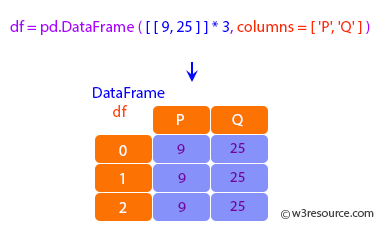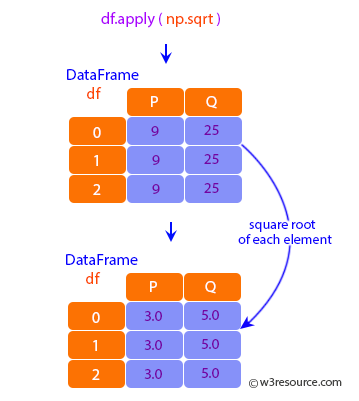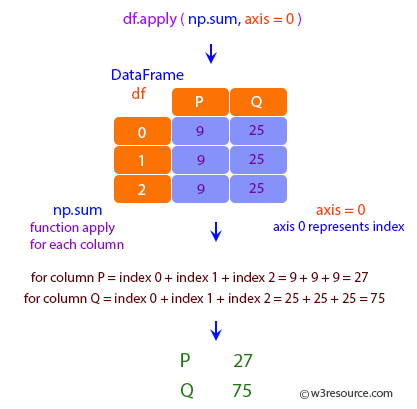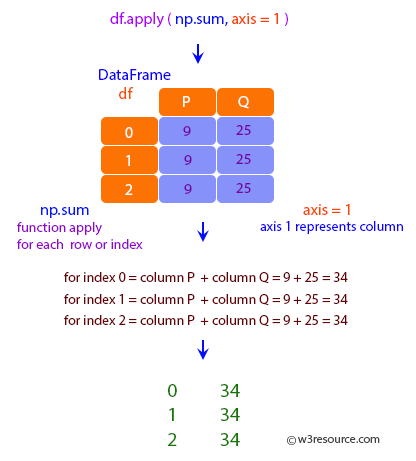Examples
In [1]:
import numpy as np
import pandas as pd
In [2]:
df = pd.DataFrame([[9, 25]] * 3, columns=['P', 'Q'])
df
Out[2]:

Using a numpy universal function (in this case the same as np.sqrt(df)):
In [3]:
df.apply(np.sqrt)
Out[3]:

Using a reducing function on either axis
In [4]:
df.apply(np.sum, axis=0)
Out[4]:

In [5]:
df.apply(np.sum, axis=1)
Out[5]:

Returning a list-like will result in a Series:
In [6]:
df.apply(lambda x: [1, 2], axis=1)
Out[6]:
Passing result_type=’expand’ will expand list-like results to columns of a Dataframe:
In [7]:
df.apply(lambda x: [1, 2], axis=1, result_type='expand')
Out[7]:
Returning a Series inside the function is similar to passing result_type='expand'.
The resulting column names will be the Series index.
In [8]:
df.apply(lambda x: pd.Series([1, 2], index=['f1', 'b1']), axis=1)
Out[8]:
Passing result_type='broadcast' will ensure the same shape result, whether list-like
or scalar is returned by the function, and broadcast it along the axis. The resulting
column names will be the originals.
In [9]:
df.apply(lambda x: [1, 2], axis=1, result_type='broadcast')
Out[9]: